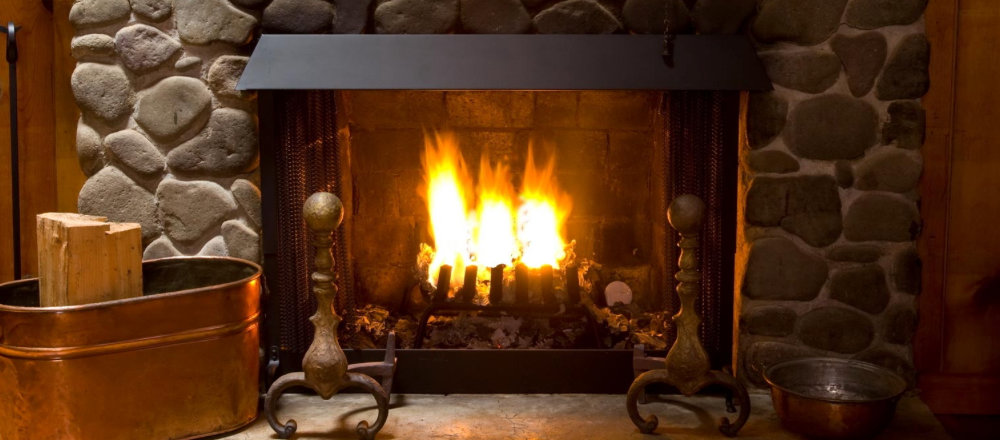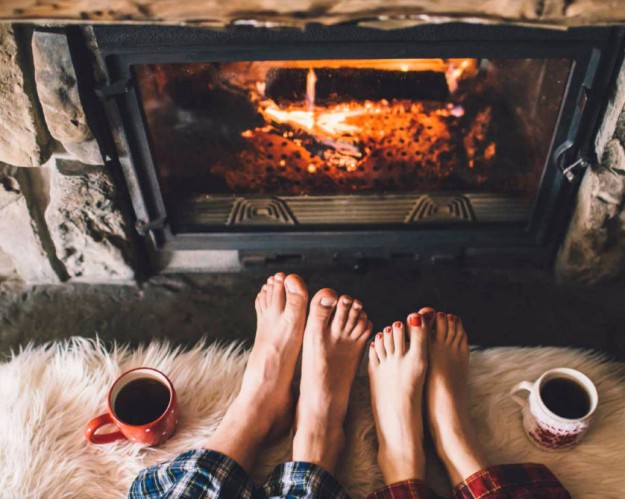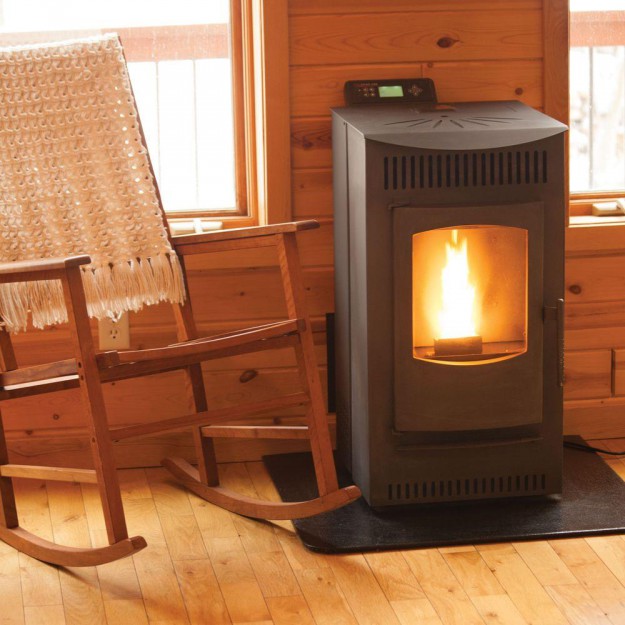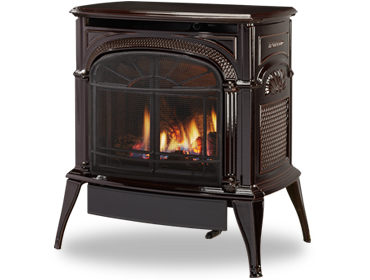The Hearth Makes A Home Warm -Stoves & Fireplaces

Staying warm is key during our long mountain town winters. Keeping your house warm, especially if it is older can be challenging, you will need to make sure your heating systems are up to date, using businesses like OneHourMagic.com to get it serviced and fixed if needed. Fireplaces and Stoves can help add warmth and ambiance as well as assist in beating those high heating bills. Choosing what is right for your home is subject to many variables and is not just a matter of if you want a metal or stonework fireplace. There are town and county codes, access to gas, and construction material and hiring the likes of a masonry Calgary company or furnace company to place it. And that is just to name a few considerations.
Something you should definitely consider before installing a stove is whether you have the space to store the fuel. Wood and pellets take up a lot of space in a log store, and if you’re not connected to the gas mains you’ll need to either get connected or install a gas tank outside. That’s why some people might choose underfloor heating installers around Sydney or someone similar closer to where they live to install underfloor heating in their home. Underfloor heating takes up no space so it’s perfect for smaller houses, and it warms the air very effectively, making it ideal for larger homes too. Stoves are still a good option for many people though, so here is a little more information on Wood Stoves, Pellet Stoves and Gas Stoves for your consideration.
Wood Burning Fireplaces
A wood-burning fireplace is a staple in many homes. As one of the oldest methods for heating a home, wood burning fireplaces have advanced dramatically over the years. Masonry fireplaces are built brick by brick or block by block by a mason at the time a home is constructed. These fireplaces are expensive to build and maintain but are meant to last. Masons nowadays might have the benefit of machines like a compressed earth block machine for easier brick-making which can help them do their work more efficiently; this could enable them to explore wider design areas. Today, wood-burning fireplaces can take on any look you desire. While the traditional fireplace “look” is still available, modern see-through and peninsula varieties are becoming an increasingly popular alternative. Masonry fireplaces have little or no control over the amount of air that feeds the fire. This leads to terrific inefficiencies compared to other equipment. Wood, gas or pellet inserts are often installed in masonry fireplaces to improve these inefficiencies and increase the amount of heat delivered to a house without losing the ambiance.
Today, wood-burning fireplaces can take on any look you desire. While the traditional fireplace “look” is still available, modern see-through and peninsula varieties are becoming an increasingly popular alternative. Masonry fireplaces have little or no control over the amount of air that feeds the fire. This leads to terrific inefficiencies compared to other equipment. Wood, gas or pellet inserts are often installed in masonry fireplaces to improve these inefficiencies and increase the amount of heat delivered to a house without losing the ambiance.

Wood Stoves
Wood Stoves are a top choice for efficiently heating interior spaces and creating ambiance. Wood stoves are no longer made simply of only cast-iron. Various materials and combinations of materials are now available, such as steel and soapstone. Stoves can be purchased in a variety of different colors, styles, and designs too. Due to requirements set by the Environmental Protection Agency (EPA), new wood stoves available today are eco-friendly with heating efficiencies ranging from 63% to 80%.
Not all wood stoves are created equal. For instance, a stove that weighs 500 pounds and has a 3 cubic foot firebox will provide heat for several hours longer than a stove that weighs half as much with a 1.5 cubic foot firebox. Indications that a wood stove is a product of good workmanship include the thickness of the steel, smooth welds, draft controls that operate smoothly, clean castings and snug doors.
Glass doors on wood burning stoves allow you to see and enjoy the flames of the fire. Quality wood burning stoves will use ceramic glass. This glass is stronger and has better heat radiating properties than tempered glass. Airflow systems “wash” the glass with hot air so sooty deposits can almost be eliminated.
Other helpful features available on wood stoves include blowers, cook-tops, rear heat shields and decorative doors. If you have plenty of accessible wood then this may be a perfect source of heat for your home.
Pellet Stoves

Everyone loves a glowing fire, but for some, the chopping, storing and maintenance of a wood burning fire can be a hassle. You can still enjoy a roaring fire that is cost-effective and environmentally-friendly without all the effort with a Pellet Stove.
Pellet stoves and wood burning stoves look similar but they are actually very different. Pellet stoves are sophisticated appliances that provide an energy efficient and eco-friendly heating option. Because of the environmentally and wallet friendly aspects of inexpensive pellet stoves, they have become much more popular in recent years.
A wood pellet is about an inch long and the diameter of a pencil. They are typically made from bits of compressed sawdust and wood waste. The pellets are completely recycled, which means that these stoves allow you to heat your home with environmentally friendly materials. Pellets normally come packaged in 40-pound bags for easy handling and storage. Confluence Energy based out of Kremmling, Colorado is the largest wood pellet manufacturer in the western US making this an even more eco-friendly option.
How do Pellet stoves work? Pellets are loaded into a bin or hopper that is usually located either on the top or back of the stove. An auger moves the pellets from the hopper into a burn pot or platform. The speed of the auger will determine the burn rate and the amount of heat delivered to the house. The majority of heat from a pellet stove is through convection. As air from the room is moved through hot heat exchange tubes designed into the stove, the heat is transferred from these steel tubes. A fan moves this heated air into the room.
The exhaust blower sends the remaining combustion by-products out through a pipe in the back of the stove. Many operate their pellet stoves manually. A thermostat or remote control can be used to set and maintain the temperature in the room.
The fire in a pellet stove is contained inside the heat box, which creates an efficient fire. In general, pellets create considerably less ash than burning wood and pellets also give off less creosote. All of this combined with the fact that pellets are made by condensing recycled wood materials into pellets makes for an environmentally friendly heating option. Many environmentalists even consider pellets to be carbon neutral.
The actual pellets that are burned in the pellet stove are very inexpensive to create and to purchase. For this reason, pellets can be purchased in small quantities on an as-needed basis, which is in drastic contrast to wood, which is purchased by the cord as a large upfront cost to burning wood.
Gas Stoves

Looking for old world charm with a splash of modern conveniences, explore the option of a freestanding gas stove. Free standing gas stoves can be added to any room, match any decor and meet your heating requirements.
Gas heating stoves come in direct-vent and vent-free varieties. Direct-vent gas stoves can be vented through an exterior wall or up through the ceiling and out the roof.
If you are tired of burning wood and want to replace a wood-burning stove with a gas model, the existing chimney can be used to properly vent the new unit.
Some vent-free model stoves, don’t require a vent at all. If should be noted that there is no vent to the outside and some are concerned about indoor air quality and health concerns associated with these stoves. If codes in your area allow their installation, in the correct application they can be effective and efficient heaters.
A popular option offered on many models of gas heating stoves is a multi-function remote control. Turn the equipment on and off, control the fan speed or the heat output of the stove. Or put it in the automatic mode and let the remote control act as a thermostat!
One of the main benefits of a gas-heating stove is the flexibility of installation. These heating units can be installed in almost any location within your home.
The flames made visible through a glass window will certainly add to the ambiance of a room with a gas stove. Technology has enabled freestanding gas stoves to have a large glass window in the front. Some models have glass on the front and both sides of the unit so that the fire’s flames can be enjoyed from several viewing angles in the room. The logs too in many gas-burning stove’s are a work of art. The design and placement of the logs are made to closely resemble real wood, giving the look of a real wood-burning fire. The gas log sets are often molded from a real wood form and then hand painted to get an almost identical look to real wood.
Do you live in an area with frequent power outages? Are you concerned about big winter storms? With a gas heating stoves, you will never have to fish around in the dark for a candle and matches or bundle up in coats and blankets indoors when the power goes out in the winter. Instead, start your gas powered stove and enjoy a warm and cozy night by the fire.
Gas stoves can also help you save on heating costs. Gas heating stoves are perfect for “zone heating” or heating one area or room. This is a great way to keep the rooms you are using nice and warm without wasting energy on heating rooms that you seldom use. The pilot light alone can keep a warm relatively warm.
Maintenance & Installation
Maintaining all of these heating sources is very important. Understanding ash removal is essential. Ashes should be placed in a tightly closing steel container and kept away from combustibles after removal. There should be an understanding about the way embers can re-ignite for many days after lying dormant if they are suddenly exposed to air. For wood and pellet stoves to operate properly routine ash removal is important. The most dangerous aspect of wood burning units is the buildup of creosote in the chimney. Annual inspection and cleaning the chimney is highly recommended. Creosote deposits in dirty chimneys are flammable. Burning dry and seasoned wood is critical for efficient and effective results.
Unless you have some mechanical aptitude and are familiar with codes and clearance requirements, all of these appliances should be installed by a professional. It’s always a good idea to check local codes and regulations before installing a gas stove, particularly in a bedroom or bathroom. United Fireplace and Stove, National Fireplace & Stove and the HPBA are good resources for finding dealer and installers.
~MTN Town Magazine | We are Colorado’s Mountain Town Magazine
Copyright 2017 MTN Town Magazine all rights reserved.
Homes & Realty Is Sponsored By:

